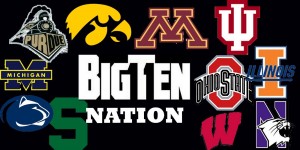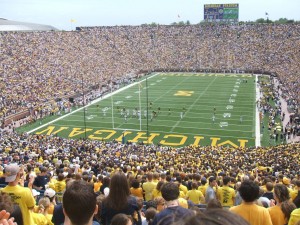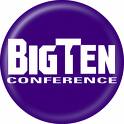by Peter Christian
Part I – How to Choose
Late last week University of Wisconsin Athletic Director Barry Alvarez grabbed some headlines (and made Big Ten commissioner Jim Delaney look like a massive tool, wait, he does that on his own, well, you get my point) when he announced that the Big Ten has begun a search to add another team into its storied athletic conference and though this announcement directly contradicts what Delaney said earlier this year about no expansion, it was a big deal for the conference. And while I could splinter off into a very lengthy diatribe about what a massive moron Delaney is and how he has done very little in his tenure as conference commissioner, I really want to focus on the importance of Alvarez’ announcement and how crucial it is for the Big Ten. It’s a step in the right direction.
A. REALLY. BIG. STEP.
The reason it’s such a big deal is that an addition of another school will help the Big 10 immensely. Easier scheduling, the possibility of splitting into 2 divisions and the potential for a conference championship (in football) are the primary reasons why Big Ten fans are very excited at the outlook of another team coming into the mix.
However, amid all the excitement lies a giant question that has dumbfounded both the fans and the conference administrators for the last decade: Who should the Big Ten go after?
Many people will simply start yelling out names and colleges without really thinking the process through. The process is the most important part and I pray that men like AD Alvarez are heavily involved in the selection of the target schools and people like Jim Delaney and their idiotic opinions are shoved by the wayside (I realize I need a lot of prayer for that last part to come to fruition). Reason being is that the school(s) that the Big Ten target(s) need to be of value to the conference as well (and not just the other way around). The new relationship has to be mutually beneficial for the addition to be a success.
Looking at the possible marriage from just the Big Ten’s standpoint for the time being, there are a few factors that should weigh heavily on whether a candidate is viable. The first and most important factor is money. In college sports EVERYTHING always comes down to money (with a hint of irony of course because the moneymakers themselves don’t get a dime, officially). In this situation the money factor simply equates to how is the new school/athletic program going to improve the revenue of the conference. Can the school field a football team that will regularly be bowl eligible? Will the basketball team make the NCAA Tournament? Does the school have good athletic attendance and facilities to host neutral site events? Those questions need to all be answered with a “yes” to be a finalist for consideration.
The second most important factor is level of competition. If the potential new members can enter into the conference, and immediately be an average team or better among the current eleven teams, that has to be considered a major plus since the conference won’t take a hit in the conversations about how tough the conference is in comparison to the other power/BCS conferences.
A third and somewhat forgotten factor is the recruiting impact the new school will have. Does the new school currently recruit the same talent that many of the other Big Ten schools draw from or does it have its own base/area to focus on? Is there potential for a new talent region to become exposed to the Big Ten with the inclusion of the new school? These are very important questions as I believe that it will be the factor the decision makers of the Big Ten should use to weed out the possibilities that are in the maybe category.
Among many of the other intangible factors to be considered, one will get a lot of weight among the fans and media, but should be very low on the priority list: regional proximity. I know that college conferences are largely divided by their geographic areas but in 2010 there is no reason that a major conference like the Big Ten should be hampered by the traveling distance between one school and another. If it were 1965, I’d rank this factor among the top 3. However most major college programs travel across the country throughout their seasons already. The University of Minnesota travels nearly 1,000 miles one way each time they have a game at conference opponent Penn St. In the ACC and the Pac-10 there are teams that are separated by more than 1,500 miles. If the Big Ten settles on a additional team because they’re regional, I’ll be call for the selection committee’s heads.
Check back tomorrow to see which candidates the Big Ten should be considering and why.



